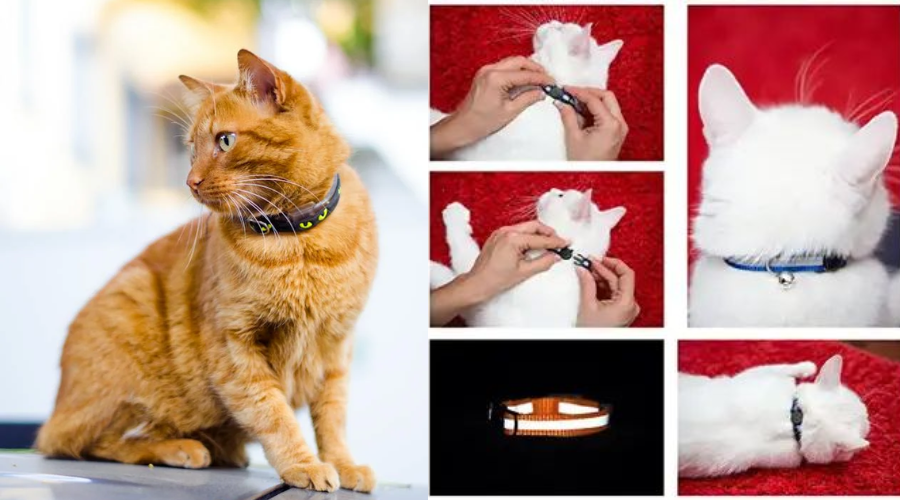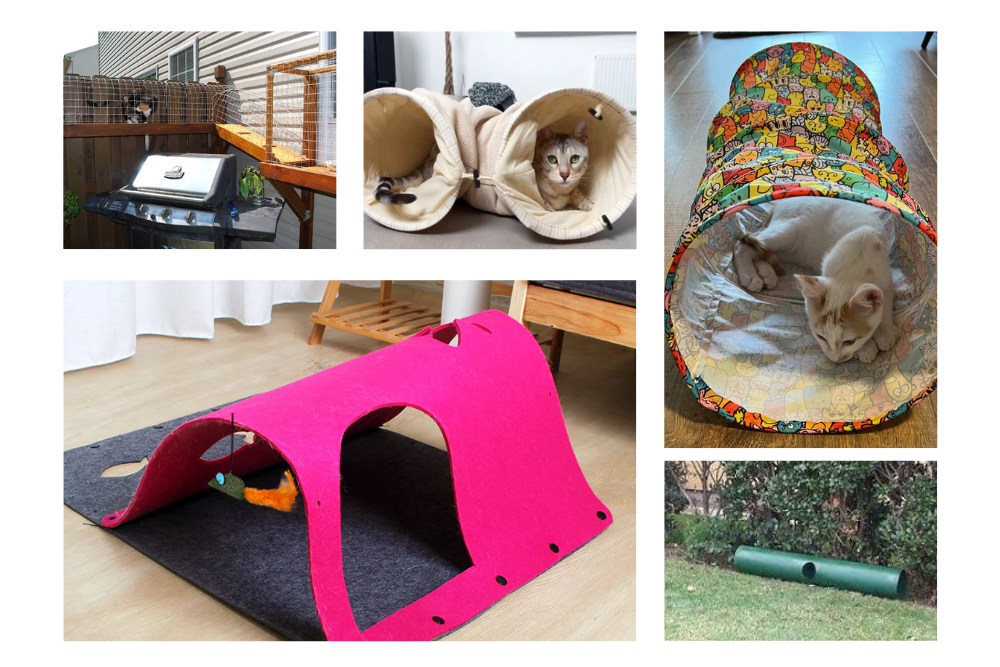Cat Flea Collars have emerged as essential tools in the arsenal of pet care, serving as guardians against the persistent and troublesome world of fleas. As doting cat owners, we understand the importance of our feline friends’ comfort and health, and flea prevention is a key aspect of achieving that. In this article, we embark on a journey to unravel the intricacies of cat flea collars—those unassuming accessories that play a crucial role in keeping our beloved cats itch-free and happy.
Join us as we explore how these collars work, their effectiveness, considerations for usage, and even delve into the compatibility with our canine companions. Discover the world of cat flea collars and empower yourself with the knowledge to make informed choices for your cat’s well-being.
Understanding Flea Collars
Cat flea collars are specialized accessories designed to repel or kill fleas on contact. Unlike topical treatments, these collars provide continuous protection, forming a barrier around your cat’s neck.
Safest Flea Treatment for Your Cats: Cat Flea Collars
Ensuring the safety of your feline companions is paramount when choosing a flea treatment. Cat flea collars stand out as one of the safest options, offering effective flea control with minimal risk when used correctly.
- Gradual and Controlled Release: Cat flea collars work by releasing active ingredients gradually. This controlled release ensures that the concentration of insecticides or repellents is at levels safe for your cat while remaining potent enough to combat fleas. This gradual dispersion minimizes the risk of overwhelming your cat’s system.
- Targeted Protection: The active ingredients in cat flea collars are specifically formulated to target fleas. This targeted approach disrupts the flea life cycle without affecting your cat’s overall health. The concentration is calibrated to provide effective protection against fleas while maintaining safety for felines.
- Minimal Systemic Absorption: Cat flea collars are designed to have minimal systemic absorption. This means that the active ingredients primarily act on the surface of your cat’s skin and fur, reducing the likelihood of the treatment affecting internal organs or causing systemic side effects.
- Safety Features: Many cat flea collars come with safety features, such as breakaway or quick-release mechanisms. These features allow the collar to open under excessive pressure, preventing accidental strangulation or injuries if your cat gets entangled. These safety measures contribute to the overall well-being of your cat during collar use.
- Adjustable Sizes for Comfort: Cat flea collars often come with adjustable sizes to ensure a comfortable and secure fit. This feature is essential for preventing irritation or discomfort associated with an improperly fitted collar. A snug but not too tight fit is crucial for both effectiveness and safety.
- Reduced Risk of Ingestion: Unlike topical treatments that may be licked or ingested by cats during grooming, cat flea collars pose a lower risk of ingestion. This minimizes the chances of your cat ingesting potentially harmful substances, making collars a safer option, particularly for cats that are sensitive to topical treatments.
- Regular Monitoring and Replacement: Regular monitoring of your cat while using a flea collar is essential. Check for signs of irritation, allergic reactions, or behavioral changes. Additionally, adhere to the recommended replacement schedule. Regular replacement ensures that the collar remains effective and minimizes the risk of adverse reactions due to the degradation of active ingredients over time.
While cat flea collars are generally safe, it’s crucial to follow the manufacturer’s guidelines, choose collars appropriate for your cat’s size and age, and consult with your veterinarian if you have specific concerns. By incorporating cat flea collars into your feline care routine, you can provide effective flea control with a focus on safety, ensuring your cat’s comfort and well-being.
How Cat Flea Collars Work
The functionality of cat flea collars is nothing short of fascinating. These collars are designed with a sophisticated mechanism that revolves around the gradual release of active ingredients. Once applied, these ingredients disperse through your cat’s fur, effectively creating a protective shield against fleas. What makes this process remarkable is the targeted approach, as these ingredients are formulated to address fleas at various life stages. By disrupting the flea life cycle, cat flea collars act as a powerful deterrent, preventing infestations and ensuring the well-being of your feline friend.
Effectiveness
When used correctly, cat flea collars stand out as highly effective tools in the battle against fleas. The key to their success lies in consistent usage and timely replacement. Regularly replacing the collar is crucial to maintain the potency of the active ingredients, ensuring a continuous and robust defense against fleas. The effectiveness of these collars makes them a popular choice among pet owners seeking a reliable solution for flea prevention.
Duration of Protection
A common query among pet owners revolves around the longevity of cat flea collars. “How long do cat flea collars last?” The duration of protection varies based on the formulation and brand of the collar. Generally, most cat flea collars offer effective protection for several months before requiring replacement. Understanding the duration of protection is essential for planning and ensuring continuous coverage against fleas.
Potential Side Effects of Cat Flea Collars
While cat flea collars are widely recognized for their effectiveness in preventing and controlling flea infestations, it’s essential for pet owners to be aware of potential side effects that may arise. Understanding and monitoring these side effects can help ensure the well-being of your feline companion.
- Allergic Reactions: Some cats may exhibit allergic reactions to the materials or active ingredients in flea collars. This can manifest as itching, redness, or swelling around the neck area. In severe cases, allergic reactions may lead to difficulty breathing. If you notice any signs of allergy, it’s crucial to remove the collar immediately and seek veterinary advice.
- Skin Irritation: Skin irritation is a common side effect, especially if the collar is too tight or if your cat has sensitive skin. Symptoms may include redness, irritation, or hair loss around the collar area. Ensuring a proper fit and regularly checking for any signs of irritation can help address this issue.
- Behavioral Changes: Some cats may exhibit changes in behavior when wearing a flea collar. This could include increased restlessness, excessive grooming, or attempts to remove the collar. While mild behavioral changes are relatively common during the initial days of collar use, persistent or severe alterations in behavior should be discussed with your veterinarian.
- Digestive Issues: In rare cases, cats may experience digestive issues as a result of ingesting or licking the collar. This can lead to symptoms such as vomiting or diarrhea. If you observe these signs, consult your veterinarian promptly.
- Respiratory Distress: Though rare, some cats may experience respiratory distress if the collar is too tight or if they are highly sensitive to the collar’s components. Ensure the collar is properly fitted, and monitor your cat for any signs of difficulty breathing, coughing, or wheezing.
To minimize the risk of potential side effects, choose a flea collar that is appropriate for your cat’s size, age, and health condition. Additionally, consult with your veterinarian before introducing a new flea collar to your cat, especially if they have a history of allergies or sensitivities. Regularly inspect the collar for proper fit and signs of irritation, and be attentive to your cat’s behavior while wearing the collar. If you notice any adverse reactions, promptly seek professional advice to ensure your cat’s safety and comfort.
Canine Compatibility of Cat Flea Collars
While cat flea collars are specifically designed for feline companions, some collars are formulated to be safe for both cats and small dogs. Understanding the compatibility of cat flea collars with canines is crucial for pet owners who share their homes with both furry friends.
- Cross-Species Collars: Certain cat flea collars are explicitly labeled as safe for use on small dogs as well. These collars typically have formulations that are considered suitable for both cats and dogs. However, it’s essential to check the product label and guidelines to ensure that the specific collar you choose is indeed suitable for canines.
- Adjustable Sizing: Collars designed for both cats and small dogs often come with adjustable sizing options. This ensures a proper and comfortable fit for pets of varying sizes. Before purchasing a collar for your dog, check the sizing recommendations provided by the manufacturer to guarantee a secure yet comfortable fit.
- Consulting Your Veterinarian: Before using a cat flea collar on your dog, it’s advisable to consult with your veterinarian. They can provide insights into whether the specific collar and its formulation are safe for your dog’s breed, size, and overall health. Veterinarians can also offer recommendations for alternative flea control methods if needed.
- Monitoring for Reactions: Once the collar is applied, closely monitor your dog for any signs of irritation, allergic reactions, or behavioral changes. While cat flea collars are generally safe for canines, individual sensitivities may vary. If you notice any adverse reactions, remove the collar promptly and seek guidance from your veterinarian.
- Separate Collars for Cats and Dogs: If you have both cats and dogs, it might be prudent to use separate flea collars designed specifically for each species. This ensures that each pet receives the appropriate protection without the risk of potential complications arising from shared collars.
While some cat flea collars are compatible with small dogs, it’s crucial to exercise caution, follow product guidelines, and seek professional advice from your veterinarian. With the right precautions, cat flea collars can contribute to effective flea control for both your feline and canine companions, fostering a pest-free and harmonious living environment for all.
Choosing the Right Cat Flea Collar
Selecting the appropriate cat flea collar is a pivotal step in ensuring effective flea prevention and the overall well-being of your feline companion. Consideration of various factors is essential to make an informed decision.
- Size, Age, and Health Conditions: Tailor your choice based on your cat’s specific attributes. Take into account factors such as size, age, and any existing health conditions. Some collars are designed for kittens, while others are suitable for adult cats. Additionally, cats with health concerns may require collars with formulations that are gentle on their system.
- Adjustable Sizes: Opt for cat flea collars with adjustable sizes. These collars offer flexibility to accommodate different neck sizes, ensuring a snug and comfortable fit for your cat. The ability to adjust the collar size is particularly beneficial as your cat grows or if you have multiple cats with varying neck sizes.
- Safety Features: Prioritize collars with safety features. Breakaway or quick-release collars are designed to open if excessive pressure is applied, reducing the risk of injury if your cat becomes entangled. Safety features are crucial to ensuring the well-being of your cat during collar use.
Application Tips for Cat Flea Collars
Proper application is fundamental to harness the full effectiveness of cat flea collars. Follow these essential tips for a successful application:
- Snug Fit: Ensure a snug fit around your cat’s neck. The collar should be tight enough to prevent it from slipping off but loose enough to allow two fingers to fit comfortably between the collar and your cat’s neck. This ensures both security and comfort for your feline friend.
- Trim Excess Length: Trim any excess length of the collar. Cats, being naturally curious, may attempt to chew on dangling ends. By removing excess length, you minimize the risk of your cat ingesting or getting entangled in the collar.
- Regular Checks: Periodically check the fit of the collar, especially in growing kittens. Adjust as needed to maintain an optimal fit. Regular inspections help prevent issues related to collar tightness or discomfort.
Alternatives to Traditional Collars
For pet owners exploring alternatives to traditional cat flea collars, various options offer effective flea control:
- Essential Oils: Essential oils like lavender, citronella, or neem are known for their flea-repelling properties. Applying diluted essential oils on your cat’s collar or bedding can provide a natural and aromatic deterrent against fleas.
- Herbal Collars: Herbal collars infused with natural ingredients such as citronella, eucalyptus, or chamomile offer a chemical-free approach to flea prevention. These collars emit pleasant scents while discouraging fleas.
- Regular Grooming: Routine grooming plays a significant role in flea control. Regular brushing removes fleas and their eggs, keeping your cat’s coat clean and reducing the likelihood of infestations.
In short, choosing the right cat flea collar involves considering your cat’s individual characteristics and preferences. Proper application and monitoring, along with awareness of alternative methods, contribute to a comprehensive approach to flea control that ensures your cat’s comfort and protection.
Natural Remedies for Cat Flea Control
For pet owners seeking alternatives to conventional cat flea collars, natural remedies offer a chemical-free and holistic approach to flea control. These remedies, derived from nature’s bounty, can be effective in keeping fleas at bay and promoting the overall well-being of your feline companion.
- Essential Oils: Essential oils are renowned for their natural insect-repelling properties. Oils such as lavender, citronella, eucalyptus, and neem are known to deter fleas. Create a diluted solution by mixing a few drops of essential oil with a carrier oil like coconut oil. Apply this mixture to your cat’s collar, bedding, or certain areas of their coat, ensuring a pleasant and effective barrier against fleas.
- Diatomaceous Earth: Diatomaceous earth is a fine powder that consists of fossilized algae. It is harmless to humans and pets but acts as a powerful desiccant against fleas. Sprinkle diatomaceous earth in areas where your cat frequents, such as bedding or carpeting. Be cautious not to apply too much directly on your cat’s fur, as it can be drying.
- Herbal Flea Collars: Herbal flea collars are an excellent alternative to traditional collars. These collars are infused with natural ingredients such as citronella, eucalyptus, chamomile, or cedar oil. The scents emitted from these collars act as natural deterrents, keeping fleas at bay without the use of harsh chemicals.
- Apple Cider Vinegar: Apple cider vinegar is a versatile home remedy with potential benefits for flea control. Add a teaspoon of apple cider vinegar to your cat’s water or mix it with their food. Some pet owners also dilute apple cider vinegar with water and use it as a spray for their cat’s coat, although it’s essential to monitor for any adverse reactions.
- Rosemary Flea Dip: Rosemary has natural flea-repelling properties. Create a rosemary flea dip by boiling fresh rosemary in water, allowing it to cool, and then straining the liquid. After a thorough bath, use the rosemary-infused water as a final rinse for your cat. This can help deter fleas while leaving a refreshing scent.
- Lemon Spray: Lemons contain natural compounds that can repel fleas. Create a lemon spray by boiling sliced lemons in water, letting it steep overnight, and then straining. Transfer the liquid to a spray bottle and lightly mist your cat’s coat, avoiding the eyes. Repeat as needed, especially before outdoor activities.
It’s important to note that while natural remedies can be effective, individual sensitivities vary among cats. Always monitor your cat for any signs of irritation or adverse reactions. Additionally, consult with your veterinarian before introducing new natural remedies, especially if your cat has pre-existing health conditions or is on medication. Combining these natural approaches with regular grooming and a clean living environment can contribute to a holistic and effective strategy for cat flea control.
Conclusion
In conclusion, cat flea collars are valuable tools in the fight against fleas, providing long-lasting protection for our beloved pets. Understanding how they work, their potential side effects, and proper application is essential for ensuring their effectiveness. Choose the right collar based on your cat’s needs, and consult your veterinarian for personalized advice.
FAQs
How do cat flea collars work?
Cat flea collars operate by releasing active ingredients that form a protective barrier against fleas. These ingredients, often insecticides or repellents, spread through your cat’s fur, disrupting the life cycle of fleas. By preventing fleas at various stages of development, cat flea collars effectively deter infestations and keep your cat itch-free.
Do cat flea collars work?
Yes, when used correctly, cat flea collars are indeed effective in preventing and controlling flea infestations. The key to their success lies in the consistent release of active ingredients, creating a shield that disrupts the life cycle of fleas. Regular replacement is crucial to maintain the collar’s potency and ensure continuous protection for your feline companion.
How long do cat flea collars last?
The duration of protection provided by cat flea collars can vary based on the collar’s formulation and brand. In general, most cat flea collars offer effective protection for several months before requiring replacement. Regularly replacing the collar is essential to ensure that the active ingredients remain potent and continue providing reliable flea prevention.
What are the potential side effects of cat flea collars?
Potential side effects of cat flea collars may include allergic reactions, skin irritation, or behavioral changes in some cats. It’s important to be vigilant and observe your cat for any signs of discomfort or unusual behavior. If you notice issues, consult with your veterinarian promptly. Choosing a collar with appropriate ingredients and following application guidelines can help mitigate these potential side effects.
Can dogs wear cat flea collars?
Some cat flea collars are designed to be safe for both cats and small dogs. However, it’s crucial to carefully check product labels and guidelines to ensure the specific collar is suitable for canines. Consulting with your veterinarian before using a cat flea collar on a dog is advisable to ensure the safety and effectiveness of the product for your canine companion. Always prioritize the well-being of your pets by following recommended guidelines and seeking professional advice when needed.


